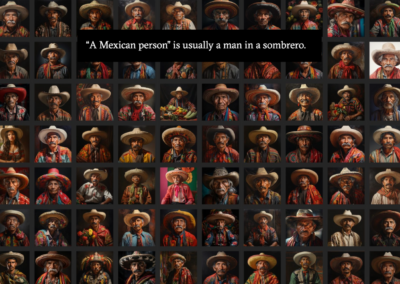At the start of the pandemic—even as virtually every industry was being rocked by massive layoffs—there was what felt like a national moment of clarity wherein everyone understood how invaluable the workers keeping grocery store shelves stocked and delivering online orders are. There was a brief window where it seemed like there would be a revelation how workers in these roles have been undervalued and underpaid for far too long—and that their compensation would reflect their “essential worker” status. But as reopening plans have lurched forward (even as the coronavirus hasn’t been meaningfully contained in the United States), the hazard pay and the lenient sick time policies that companies proudly announced have quietly faded away.
Even the pandemic couldn’t shake us free from the dominant American model of work that depends on stripping the laborforce of every semblance of humanity. But it doesn’t have to be this way.
Emily Guendelsberger comes to this crucial conclusion in her book On the Clock: What Low Wage Work Did to Me and How it Drives America Insane, which delves into what day-to-day life looks like for the average American worker as well as the history and practices that lead us to this point. After being laid off from her newspaper job, Guendelsberger decided to take a boots-on-the-ground approach to examining the current state of low-wage work in the U.S. To do this, Guendelsberger took on different jobs at three different companies in three different states. She worked as a customer service representative for a call center in North Carolina, a warehouse worker for a shipping giant in Kentucky, and a cashier at a San Francisco fast food restaurant.
Many of the details of a typical working day are, on their face, expected. Customers are rude, breaks are brutally regimented, and the pay is low. Guendelsberger relays these stories with vivid detail and humor, and then uses these same anecdotes to dig deeper. She paints portraits of co-workers that have no choice but to resort to DIY dental surgery or have taught themselves how to remain unreactive when customers throw things at them (because having a human response could mean losing their job). These experiences then succinctly dovetail with research into the history of the American workforce, the science of learned helplessness, and information from experts that illustrate how out of control our current system is with our evolutionary development.
One contributing element that Guendelsberger dives into is technology, which at one time seemed like our gateway to a better, Star Trek-esque future. Instead, technology has been harnessed to calculate the minimum number of workers necessary for a shift in order to squeeze out the maximum amount of labor. Human necessities like downtime, breaks, needing to take a sick day have been algorithimed away. And, what’s more, workers who successfully navigate these crucibles go home with a paycheck that’s barely enough to survive on.
While On the Clock came out in the summer of 2019, the systems present in this text remain stubbornly in place, making it essential reading for anyone who’s never worked a job in a call center, warehouse, or food service (or hasn’t in a very long time). This is doubly so for anyone who’s so much as flinched at the idea of a $15 minimum wage.
On The Clock is a window into a world that lifetime white-collar workers might not know much about, and from a class consciousness point of view, that the white-collar workers of this country have infinitely more in common with wage workers than they do with the ruling class. And while it’s not breaking news to anyone well-acquainted with low wage work that these jobs are physically damaging and frequently entail enduring verbal abuse from customers, this book offers an important reminder that you’re not crazy for thinking the trade off for your full-time labor should, at minimum, be basic dignity and assured survival. And, despite how challenging the current system may seem, there are ways to make the future better and more humane for all workers—and they all start with getting out of our own way and imagining life and work as it should be. Forming and joining unions very directly gives workers the power to bargain for pay and protections that are impossible to leverage for as an individual. And instead of getting distracted by questions (usually asked in bad faith) such as “How will we pay for it?” we can vocally throw our support behind restoring our hobbled social programs and launching ambitious progressive initiatives (and the lawmakers who champion them) like The Green New Deal. By coming together, it is possible to make work better for everyone.
Chantel’s Socials: LinkedIn
Editor’s Socials & Website – Analisa Cantu: LinkedIn, Twitter



